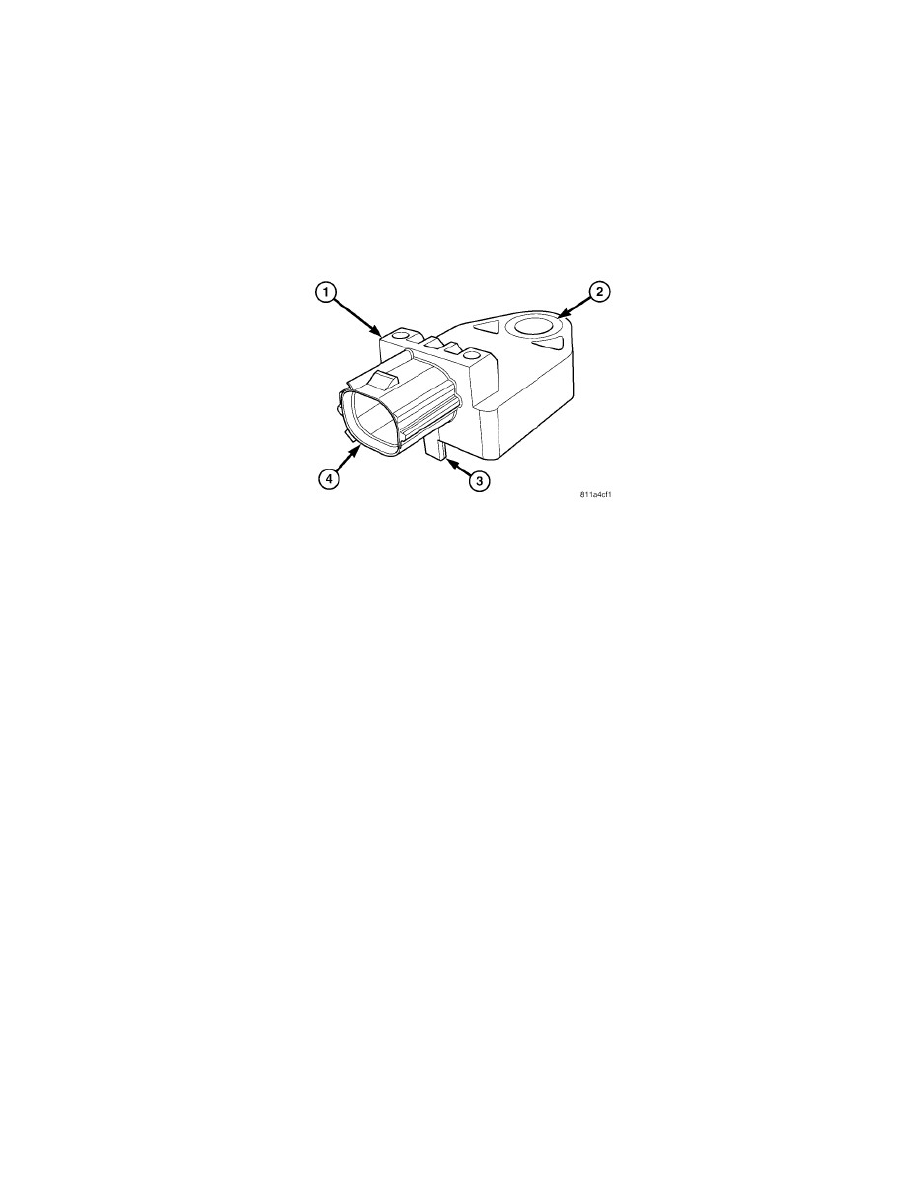RAM 2500 Truck 2WD L6-6.7L DSL Turbo (2010)

Impact Sensor: Description and Operation
Impact Sensor - Description
DESCRIPTION
Remote or satellite impact sensors are located in various locations in the vehicle. These sensors are mounted remotely from the impact sensor that is
internal to the Occupant Restraint Controller (ORC). Sensors at the front of the vehicle provide an additional logic input for use by the Occupant
Restraint Controller (ORC) to control the front airbags and the seat belt pretensioners. Sensors on each side of the vehicle provide an additional logic
input for use by the ORC to control the side curtain airbags and the seat belt pretensioners. Two types of sensors are used in this vehicle. They are the
acceleration-type and the pressure-type, which are described in further detail in the following paragraphs.
ACCELERATION TYPE
Each vehicle has at least four, but as many as six remote acceleration-type impact sensors (1). Two front sensors, one each for the left and right sides of
the vehicle are secured with a screw to the back of the right or left end of the lower radiator crossmember within the engine compartment. Two side
sensors, one each for the left and right sides of the vehicle are secured with a screw near the base of the right or left inner B-pillar within the passenger
compartment. Quad cab or crew cab and mega cab models have two additional side sensors, one each for the left and right sides of the vehicle, secured
with a screw near the base of the right or left inner C-pillar within the passenger compartment.
The right and left front impact sensors are identical in construction and calibration. The right and left side impact sensors are also identical in
construction and calibration. Although the front and side impact sensors are similar in appearance and construction, they are not interchangeable. The
front sensors are designed to withstand the harsher operating environment found within the engine compartment.
Each sensor housing has an integral connector receptacle (4), an integral anti-rotation pin (3), and an integral mounting hole (2) with a metal sleeve to
provide crush protection. A cavity in the center of the molded plastic impact sensor housing contains the electronic circuitry of the sensor which includes
an electronic communication chip and an electronic acceleration sensor. Potting material fills the cavity to seal and protect the internal electronic
circuitry and components. The front impact sensors are each connected to the vehicle electrical system through a dedicated take out and connector of the
Front End Module (FEM) wire harness, while the side impact sensors are connected through dedicated take outs and connectors of the body wire
harness.
The acceleration-type impact sensors cannot be repaired or adjusted and, if damaged or ineffective, they must be replaced.
PRESSURE TYPE
